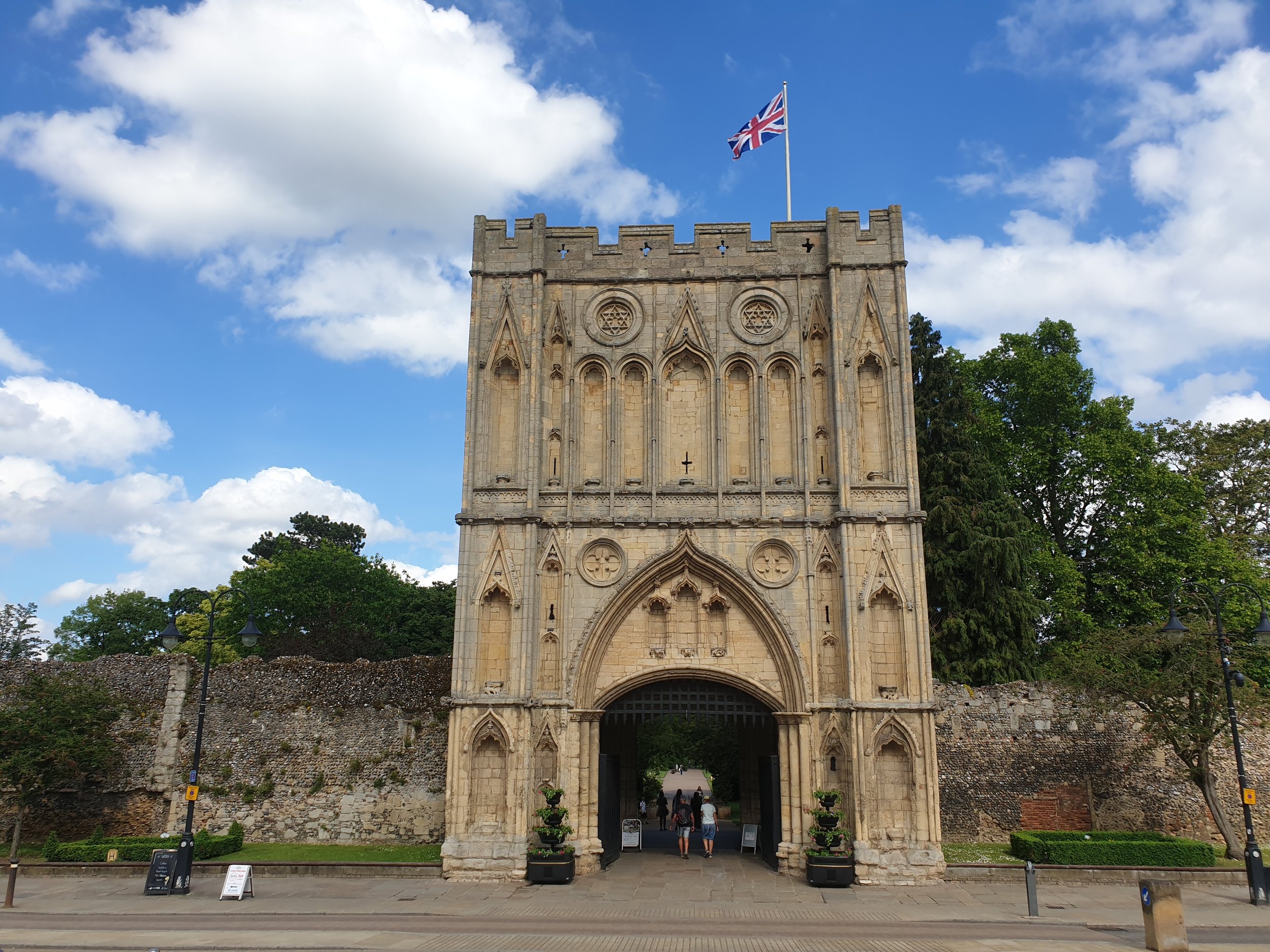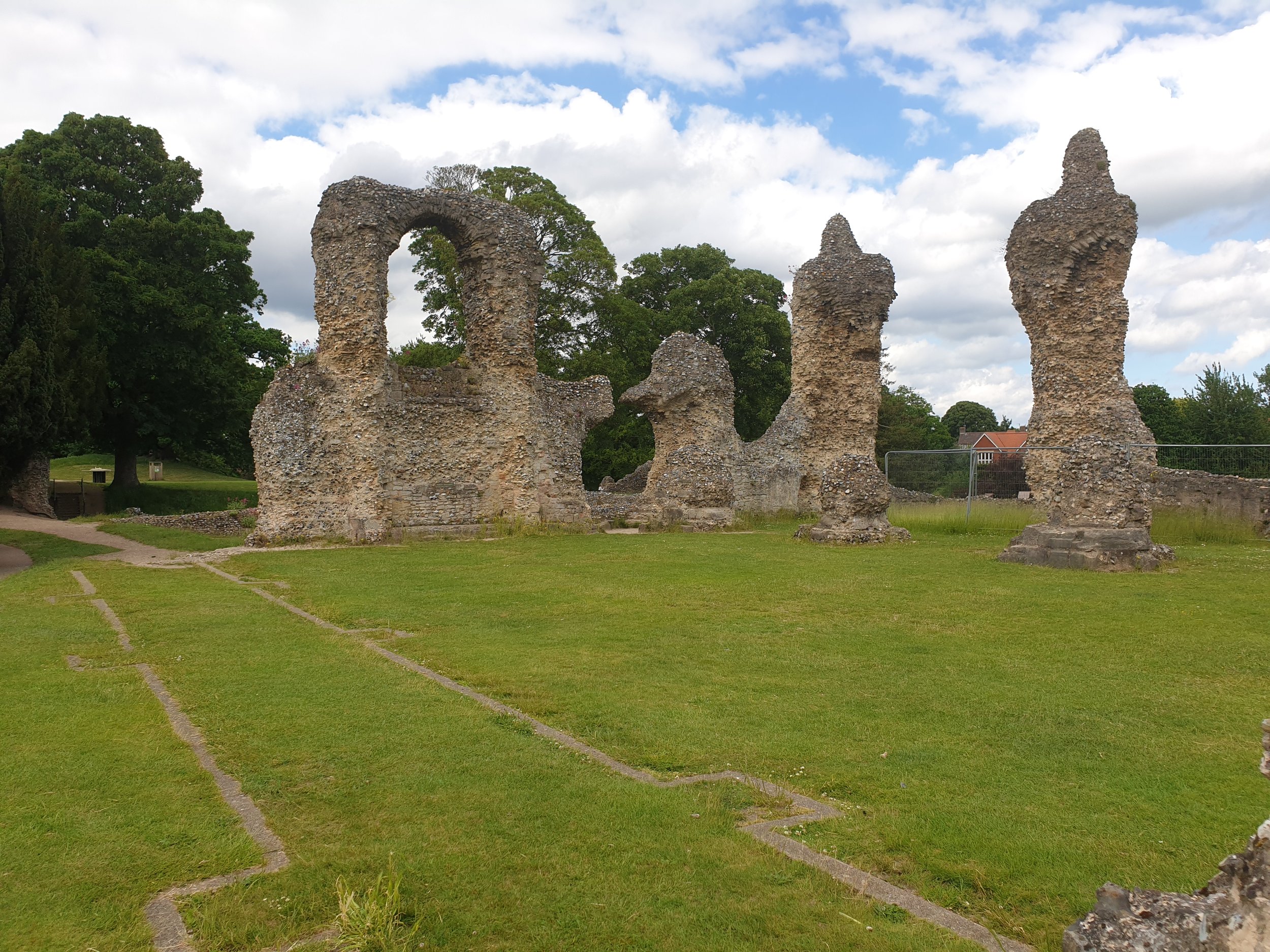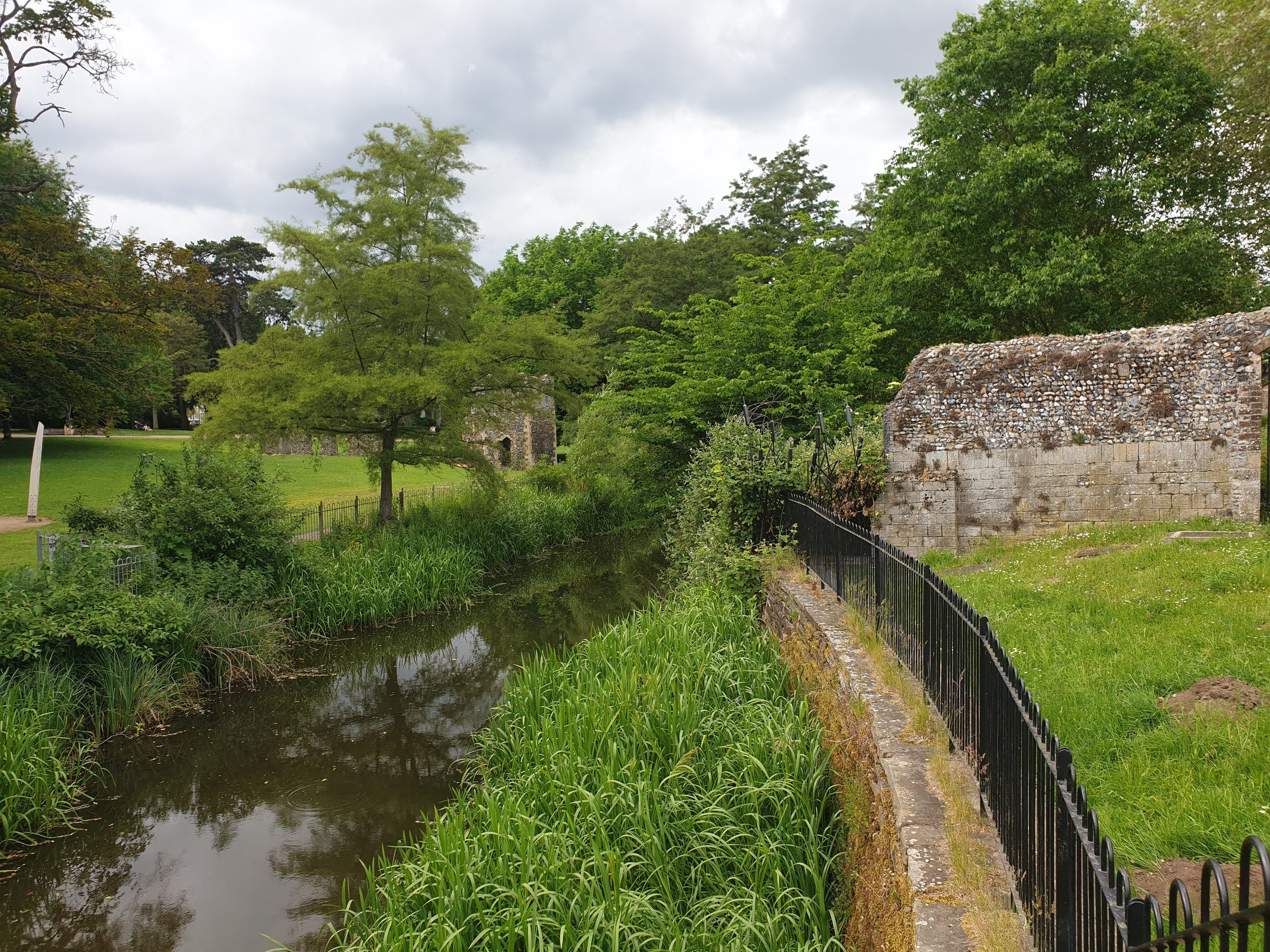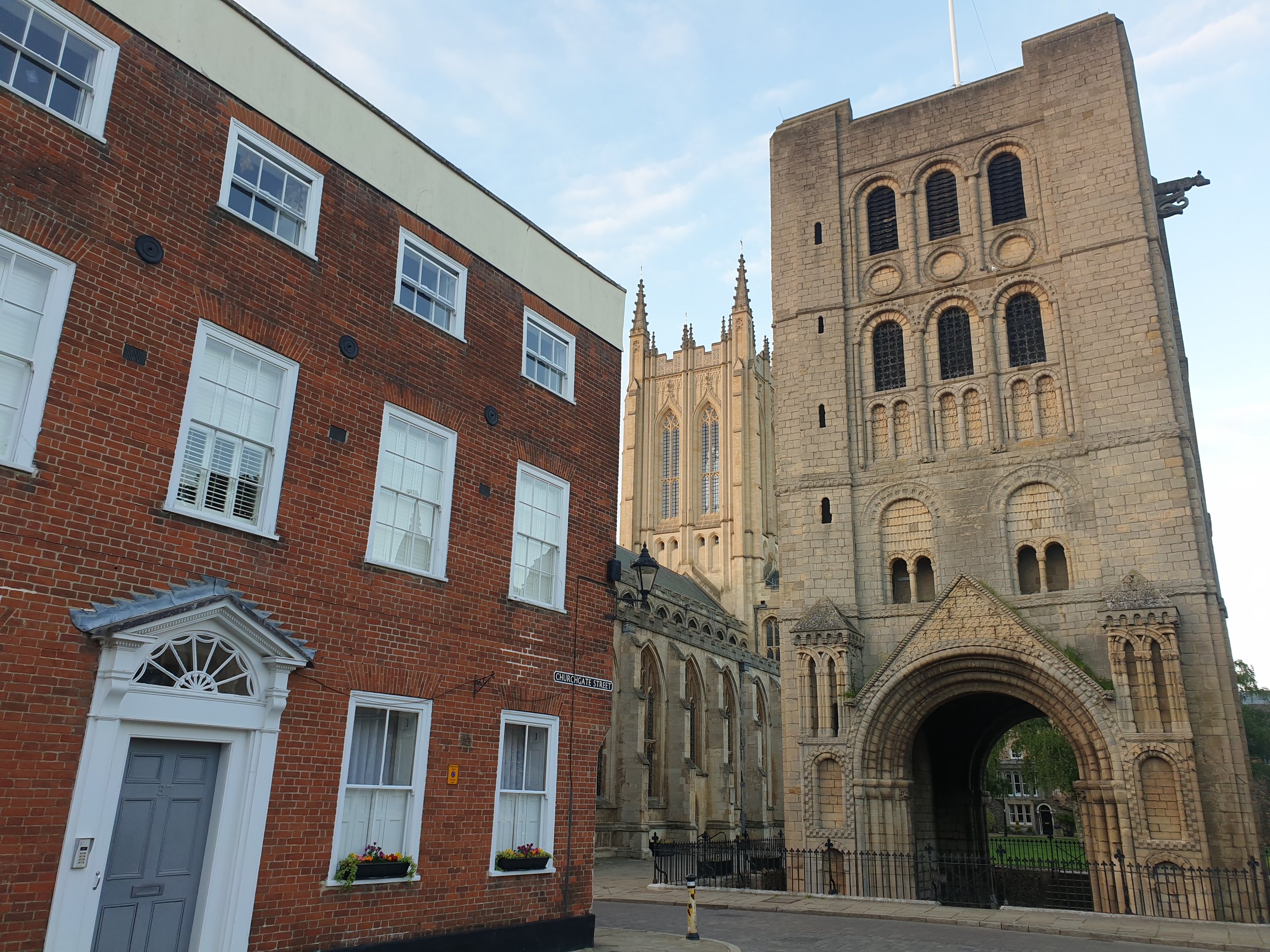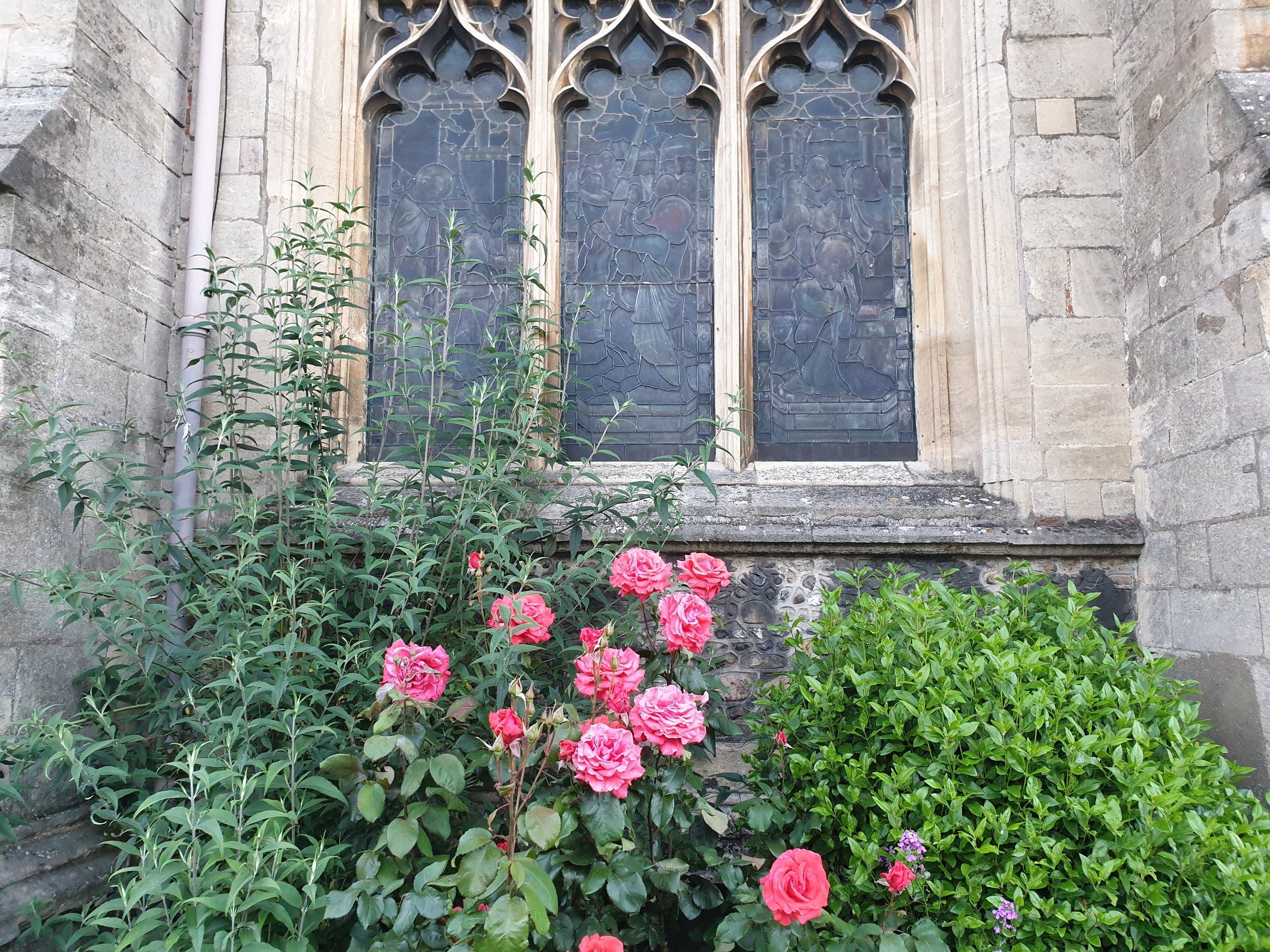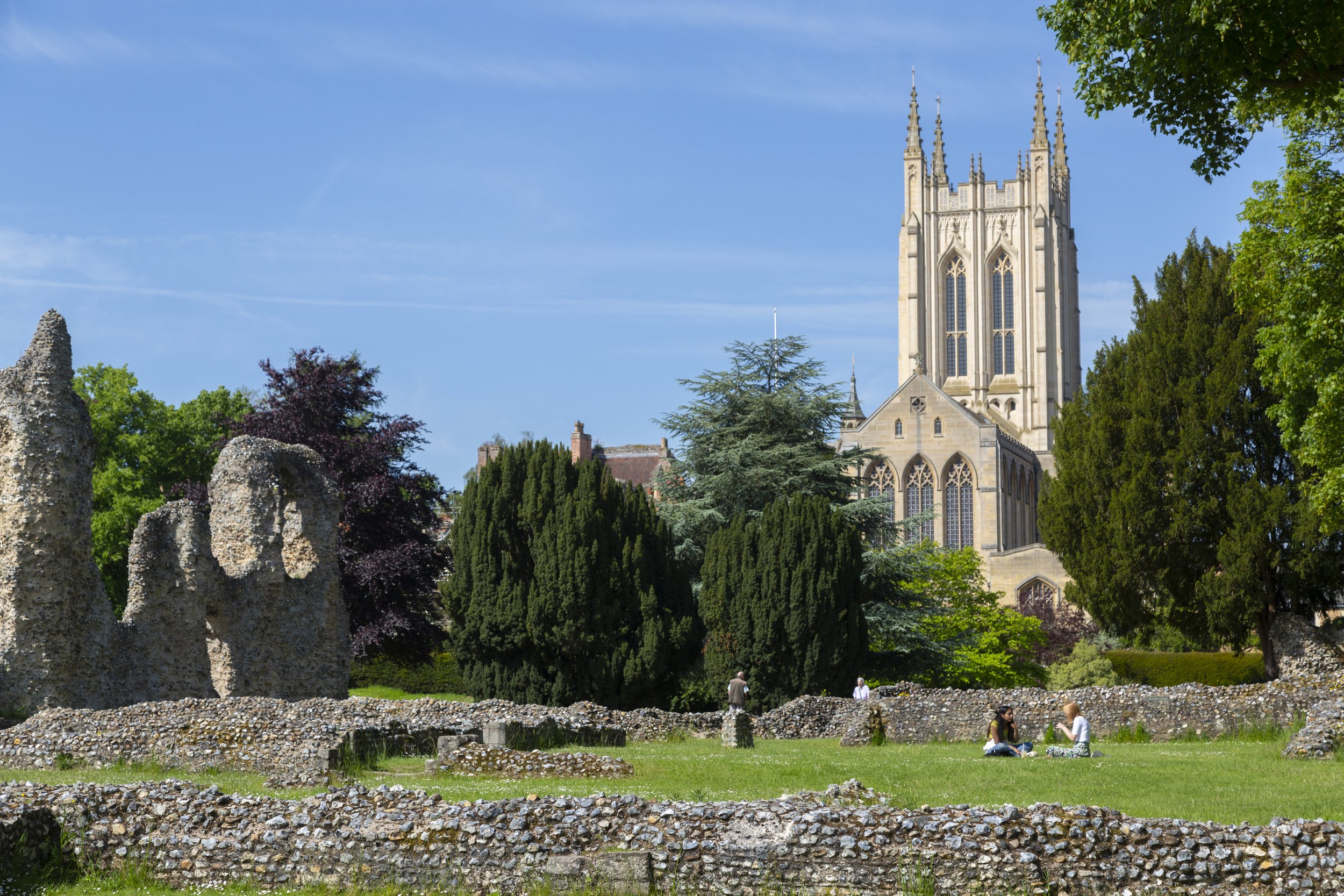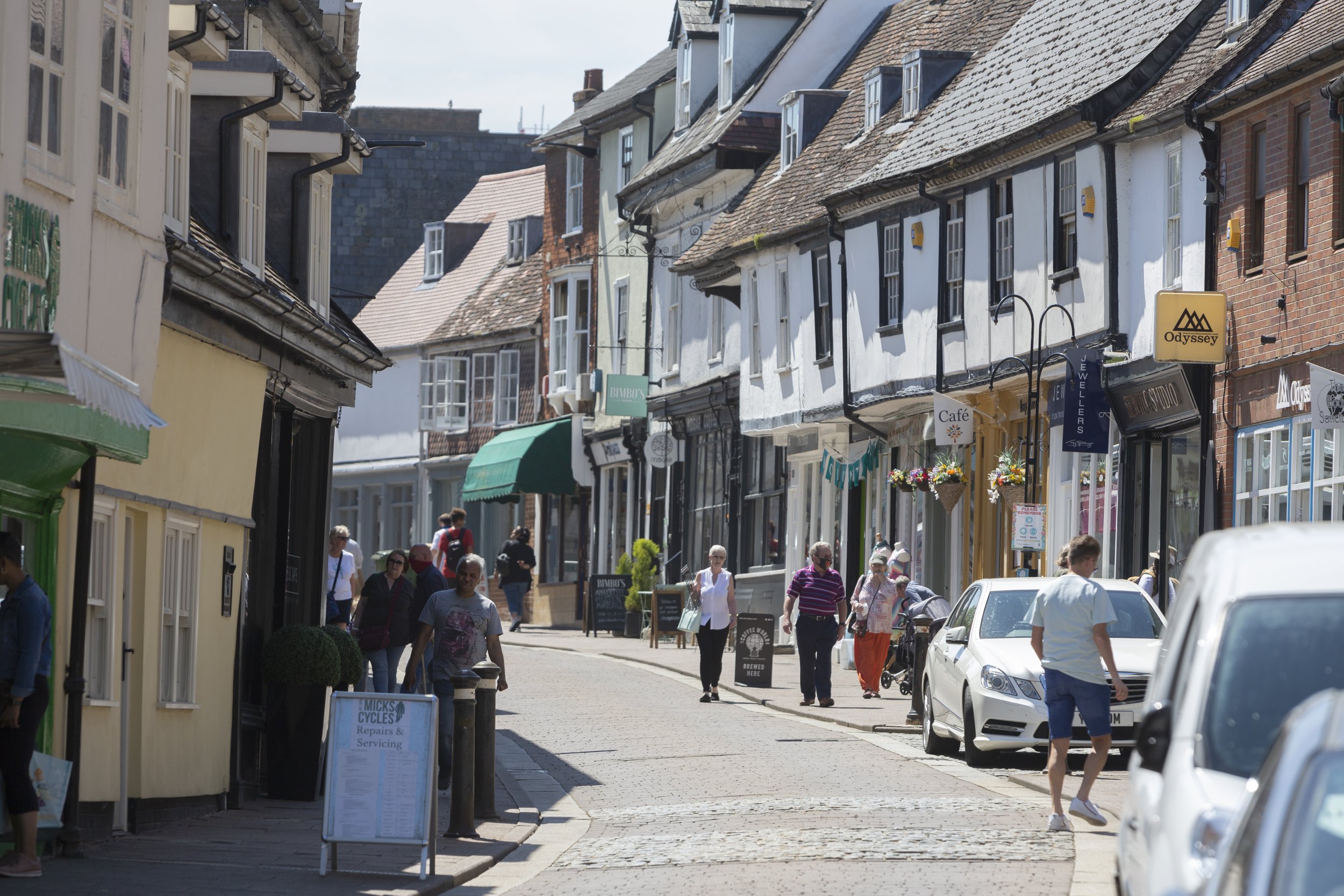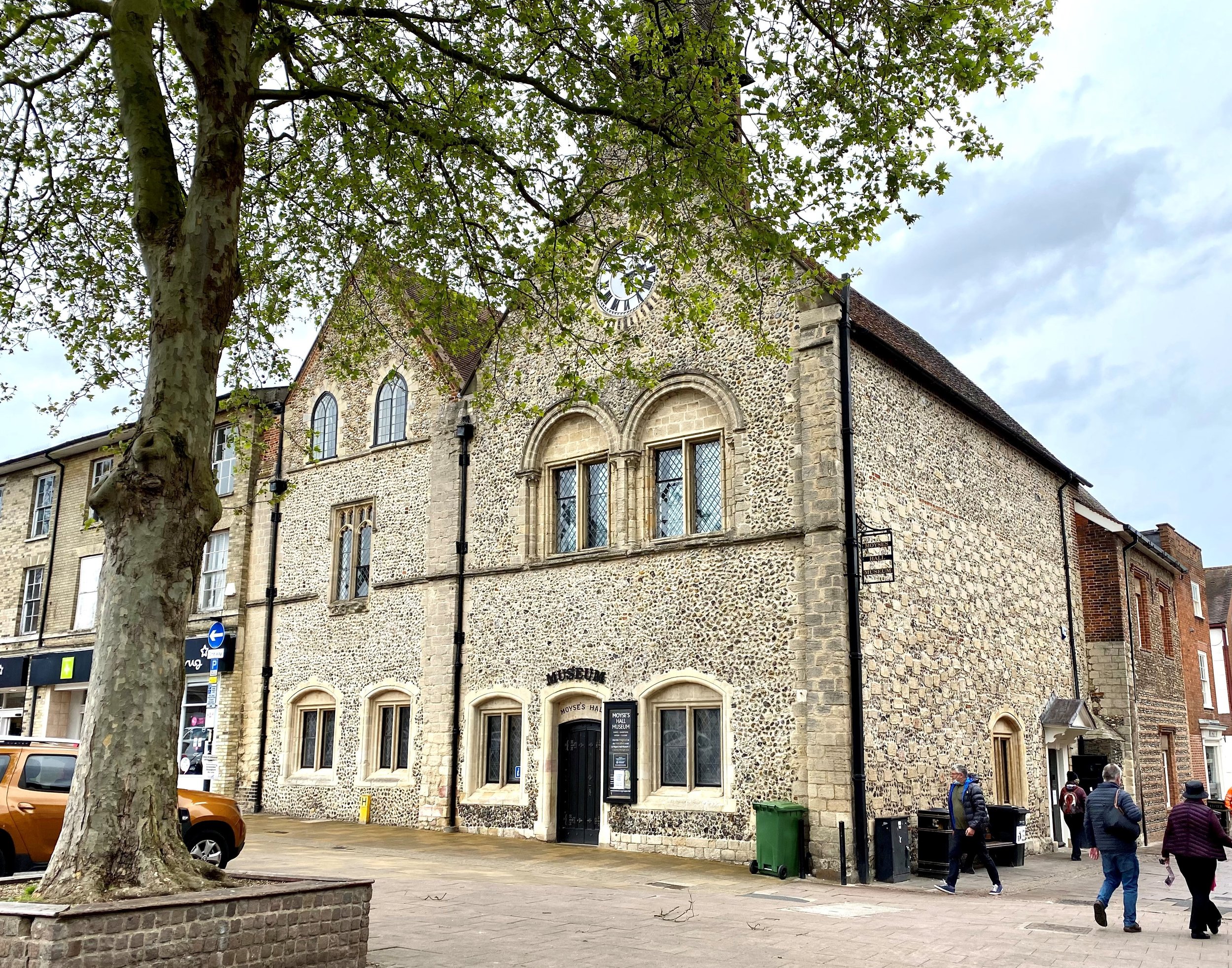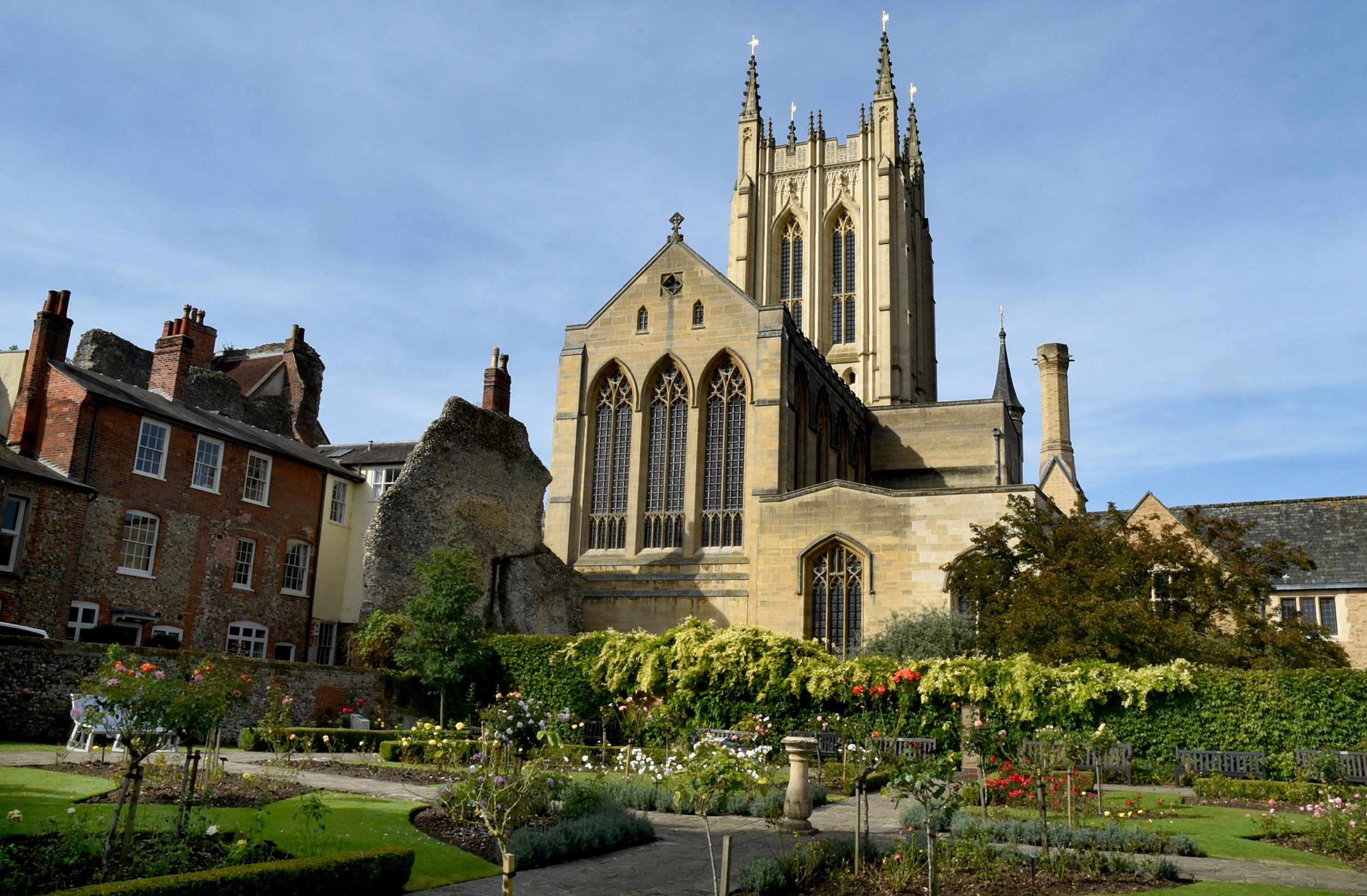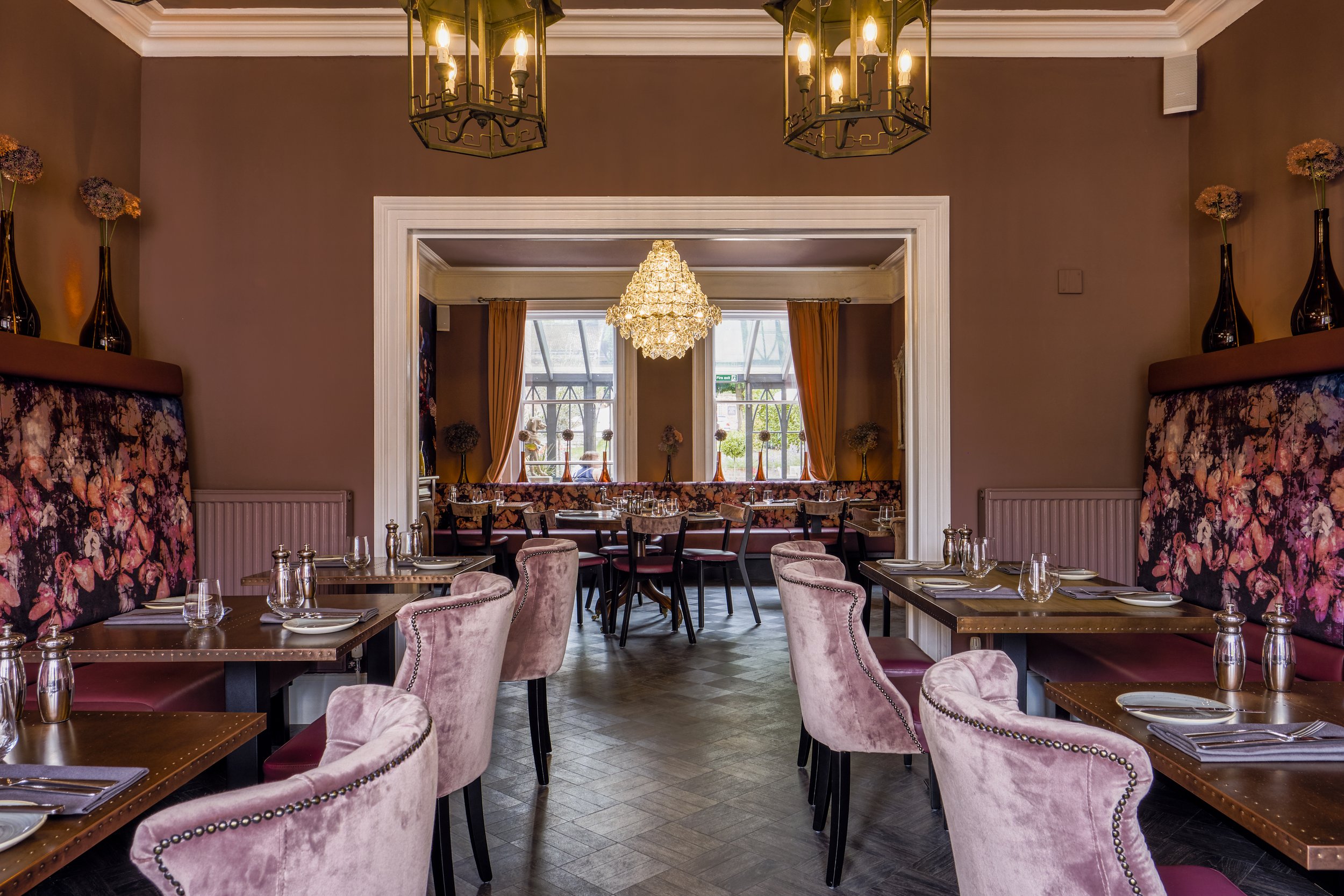
BURY ST EDMUNDS, SUFFOLK
How to spend the perfect weekend in historic Bury St Edmunds
Why go?
A mini-break in Bury St Edmunds is all about dipping your toe into history. The town's 1,000 years of tales span Saxon kings and Tudor queens via martyrs, monks and Viking raiders: and it's all packed into the pint-sized centre. Bury's reason for being - its abbey, now in ruins - was established by King Canute in 1020 to honour Edmund (England's original patron saint) on the spot where he died at the hands of the Danes. It became one of the nation’s wealthiest monasteries and remained a place of pilgrimage until being destroyed (and its riches plundered) by King Henry VIII.
The town that developed alongside the abbey mixes medieval terraces with Georgian townhouses, ensuring that its handsome streets are brimming with well-to-do charm. Among their landmarks is the Guildhall: Britain's oldest civic building. There’s also the elegant Corn Exchange, now cruelly transformed into a Wetherspoon's pub; Bury St Edmunds may look like a fairytale, but that’s no happy ending.
When to go
There's stuff to do here all year round. Summertime (with the Abbey Gardens at their colourful best) sees alfresco drinking and dining options springing up all over town. Off-season, there are cosy bars and pubs to hunker down in, plus cultural exhibitions, shows and the cutesy Christmas market.
Where to stay
Blowout
Bury's grandest digs can be found at super-central The Angel Hotel, which stands across the square from Abbey Gate. Behind its creeper-covered façade are 77 rooms that are mostly decorated in a fresh, contemporary style. The few that are not include Room 215, which looks essentially as it did when the author Charles Dickens slept here in 1835. Doubles from £139, B&B.
Boutique
Set within a Victorian villa that's been given a chic, metropolitan makeover, The Northgate is a brilliant base for exploring Bury St Edmunds. With its huge chandeliers and bold-patterned fabrics, this restaurant-with-rooms has a sense of playful opulence that's nicely balanced by the restful decor in the nine bedrooms upstairs. Doubles from £130, B&B.
Budget
A little closer to the railway station, The Old Cannon Brewery has seven en-suite bedrooms in the fuss-free setting of, you guessed it, a former brewery. Though small-batch beers are still made in the adjacent modern building, this original portion has been converted into guestrooms and a well-received restaurant. Doubles from £99, B&B.
Don't miss
Central park
Abbey Gardens (the leafy green space at the centre of town) is where Bury St Edmunds' story began. The crumbling stone walls scattered among lawns and formal plantings are all that remain of the Benedictine Abbey of St Edmund. Still standing a full millennium after they were built, these broken walls only hint at the scale and grandeur of the abbey (which was one of the largest in Europe) and its outbuildings. Enter though Abbey Gate (built in 1347), see where powerful barons met in 1214 to propose the Magna Carta, then exit via the bell tower (one of the best-preserved Norman structures in Britain). It's genuinely remarkable.
Put foot
Gain maximum insight into local history on a 90-minute walking tour. Start among the abbey's ruins to have them brought to life through tales of St Edmund, long-ago kings and the dissolution of the monasteries; then continue into The Grid to learn about Bury's evolution from medieval monastery to Georgian resort and Victorian cultural centre.
Take me to church
Although the name is a giveaway, you'd never guess that St Edmundsbury Cathedral's Millennium Tower is a recent addition: completed in 2005, it's built to complement the original 1503 structure. Take a tour (it's the highest viewpoint in town), then pop next door to St Mary's Church to check out the carved angels on its 500-year-old beams, plus the tomb of Mary Tudor (King Henry VIII's sister), who's buried here.
Artistic merits
Get a hint of Bury's splendour in its Georgian heyday at The Athenaeum. Now a space for private events, it once hosted readings and performances by literary giants such as Charles Dickens, Oscar Wilde and WM Thackeray. Or catch a contemporary show round the corner at Theatre Royal: the only surviving Regency playhouse in Britain.
Cultural fix
From workhouse to police station and parcel-sorting office, Moyse's Hall has seen plenty of guises over the last 900 years. Today the ancient building is a museum of medieval artefacts, including a good few macabre objects relating to crime, punishment and witchcraft. A contemporary extension houses art exhibitions.
Bottoms up
Beer plays a very big part in the fortunes of Bury St Edmunds. Plenty of pubs hereabouts are affiliated with Greene King, the local brewery that administers over 2,000 pubs nationwide. An amalgamation of Greene's and King's, two competing Bury-based businesses, the company was originally founded in 1799 and is still headquartered here in its hometown. Take a tour of the facility with a tasting at its Beer Café, or check out its brews just around the corner at The Dog & Partridge.
Bury St Edmund's most famous pub is also Britain's smallest: The Nutshell. Tucked away in The Grid, this tiny space has been a pub since 1867 and its interiors - chock full of taxidermy, ephemera and a ceiling papered with banknotes - seem unlikely to have changed in all that time.
For something a little more chic, hit the bar at The Northgate where geometric tiles, feature walls and bronzed banquettes set a remarkably metropolitan scene for such a tiny town. The cocktail list features all the classics plus others with a Northgate twist, such as an Aperol spritz tinged with chestnut or a Summer's Day cocktail with muddled fresh fruits.
Feed me
Bury certainly isn't short on decent places to eat. Striking a balance between casual dining and destination restaurant is The Angel Hotel, where dishes celebrate the best of East Anglian produce. The moderately-priced menu might feature the likes Cromer crab, Norfolk quail or a feta and cucumber salad, all served with views through Georgian windows to the centuries-old Abbey Gate.
The town's other notable restaurants include Maison Bleue for French-modern fine dining served in a 17th century townhouse. Another historic townhouse - this one bowed and bent, with medieval façade - provides an atmospheric setting for more fine-dining at 1921, where the focus is on seasonal ingredients turned into imaginative dishes. Or for more of a pub vibe, hit One Bull a few doors down for its mostly local menu washed down with a pint of Brewshed from its sister brewery.
For a genuine treat, book ahead at Pea Porridge: the recipient of Suffolk's first and only Michelin star. The almost daily-changing, produce-driven menu makes the most of each season with the likes of Norfolk asparagus, Cornish seafood or Hebridean lamb. It's all very reasonably priced considering the calibre of the cuisine, with the lunchtime set menu (from £25pp) being a particular steal.
LGBT+
The latter half of the 17th Century was a bad time for women to be gay (or indeed out of the ordinary in any conceivable way). The misogynistic mission of the Witchfinder General, Matthew Hopkins, saw hundreds of women across East Anglia face trumped-up charges of witchcraft, with more executed in Bury St Edmunds than any other town.
Best foot forward
Starting at the Abbey Gate, head into Abbey Gardens and pass the flowerbeds and ruins to meet the diminutive River Lark. Cross the footbridge (keeping a lookout for water voles) and turn right along the riverside path, following its willow-lined route through the park and beyond via agricultural fields to reach the A134. Turn right, cross the river and (after the petrol station) turn right again into the rugby club's car park. Pass the clubhouse. Just after the track bends left to an overflow car park, head down the short set of steps on the right into some water meadows. Turn left and, at a cycle path up ahead, left again through a car park and into a graveyard, aiming for the cathedral. Just before you reach the Norman Tower, note the statue of St Edmund on a lawn beneath the cathedral; then turn right along Angel Hill to return to Abbey Gate: a total walk of about two miles.
Take me home
Laid out in the 1200s, the neat grid of streets to the north of Abbey Gate is the heart of the city. Its buildings' narrow façades, steep-pitched roofs and jettied upper stories are typical of medieval architecture, forming a quirky setting for their indy shops and higher-end chains. Browse away, then take a break in a café on Angel Hill, the square that was formerly the town's main marketplace. The Arc Shopping Centre (an open-air mall) on the other side of The Grid is filled with everyday high-street stores but has little allure.
How to get here
Bury St Edmunds is served by trains from London (via Ely or Ipswich) in 1¾ hours, or in about 40 minutes from Cambridge. Find more visitor information at burystedmundsandbeyond.co.uk.
Book train tickets or check timetables and fares with www.thetrainline.com
